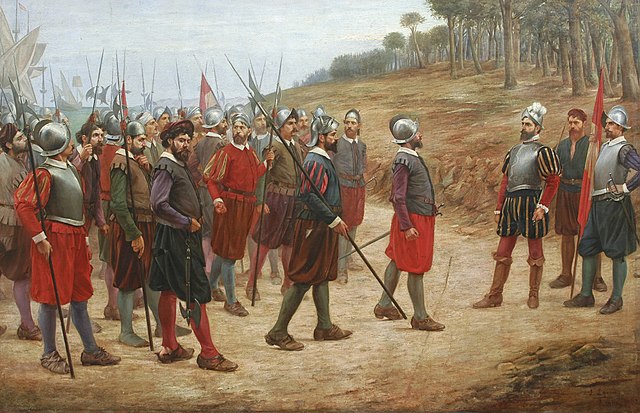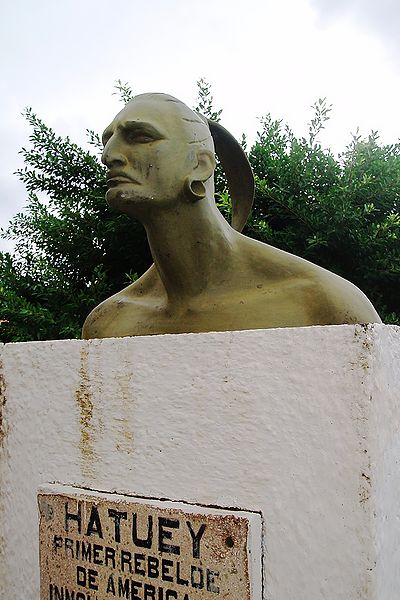Spanish conquest of the Inca Empire
The Spanish conquest of the Inca Empire, also known as the Conquest of Peru, was one of the most important campaigns in the Spanish colonization of the Americas. After years of preliminary exploration and military skirmishes, 168 Spanish soldiers under conquistador Francisco Pizarro, along with his brothers in arms and their indigenous allies, captured the Sapa Inca Atahualpa in the 1532 Battle of Cajamarca. It was the first step in a long campaign that took decades of fighting but ended in Spanish victory in 1572 and colonization of the region as the Viceroyalty of Peru. The conquest of the Inca Empire, led to spin-off campaigns into present-day Chile and Colombia, as well as expeditions to the Amazon Basin and surrounding rainforest.
The conquistador Diego de Almagro, a native of the town of Almagro, one of the three partners in the conquest of Peru.
The conquistador Francisco Pizarro, a native of Trujillo.
The Famous Thirteen by Juan Lepiani
Francisco Pizarro meets with Atahualpa, 1532
Spanish colonization of the Americas
The Spanish colonization of the Americas began in 1493 on the Caribbean island of Hispaniola after the initial 1492 voyage of Genoese mariner Christopher Columbus under license from Queen Isabella I of Castile. These overseas territories of the Spanish Empire were under the jurisdiction of Crown of Castile until the last territory was lost in 1898. Spaniards saw the dense populations of indigenous peoples as an important economic resource and the territory claimed as potentially producing great wealth for individual Spaniards and the crown. Religion played an important role in the Spanish conquest and incorporation of indigenous peoples, bringing them into the Catholic Church peacefully or by force. The crown created civil and religious structures to administer the vast territory. Spanish men and women settled in greatest numbers where there were dense indigenous populations and the existence of valuable resources for extraction.
"The Discovery of America" (Johann Moritz Rugendas)
A 16th-century illustration by Flemish Protestant Theodor de Bry for Las Casas' A Short Account of the Destruction of the Indies depicting Taínos fighting back against Spaniards, showing cannibalism and forcing a Spaniard to swallow molten gold.
Theodor de Bry illustration depicting Spanish atrocities during the conquest of Hispaniola. Las Casas wrote about the cruelty of Spanish settlers: "They erected certain Gibbets, large, but low made, so that their feet almost reached the ground, every one of which was so ordered as to bear Thirteen Persons in Honour and Reverence (as they said blasphemously) of our Redeemer and his Twelve Apostles, under which they made a Fire to burn them to Ashes whilst hanging on them"
Bust of Hatuey, who rebelled against the Spanish








